Top 10 Most Expensive Chocolates In The World

Updated · Mar 24, 2025


TABLE OF CONTENTS
- Introduction
- History About Chocolates
- Types of Chocolates
- Factors Making Chocolates More Expensive
- Benefits and Risk Factors of Eating Expensive Chocolates
- Top 10 Most Expensive Chocolates
- #1. La Madeline au Truffe
- #2. To’ak Chocolate
- #3. Frrrozen Haute Chocolate
- #4. Wispa Gold Chocolate Bar
- #5. DeLafée Gold Chocolate
- #6. Amedei Porcelana
- #7. Knipschildt’s Chocopologie
- #8. Richart Chocolates
- #9. Godiva “G” Collection
- #10. The House of Grauer
- Conclusion
Introduction
Most Expensive Chocolates: People around the globe prefer and love chocolate, but some are more than just sweets; they are used for luxury treats. These chocolates are made using the best cocoa beans and rare ingredients, and they are carefully handcrafted for a rich taste.
Some special methods helped to create a smooth texture and deep flavors, making each bite special and memorable. Expensive chocolates even have gol, rare spices or are aged like fine wine, and their beautiful packaging adds to their premium feel.
These luxury chocolates are perfect as gifts for special moments or for those who enjoy gourmet treats. Although they are much more expensive than regular chocolates, their quality and craftsmanship make them worth it. Whether it’s a rare single piece or a limited-edition box, these chocolates offer a truly unforgettable taste.
History About Chocolates
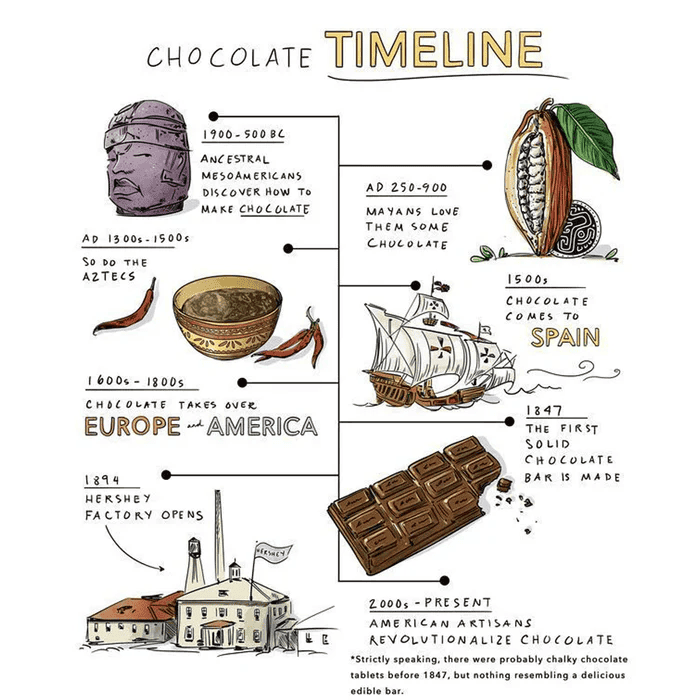 (Source: harshchocolates.com)
(Source: harshchocolates.com)
- Around 1900 BC, the Mokaya people in present-day Mexico enjoyed cacao drinks.
- By 1750 BC, early cultures in Veracruz, Mexico, made cacao beverages, showing its importance in Mesoamerican life.
- In the 15th century, the Aztecs honoured cacao, linking it to their god Quetzalcoatl and using it in ceremonies.
- In 1502, Christopher Columbus discovered cacao beans on his fourth trip to the Americas and brought them to Europe.
- In 1521, Hernán Cortés saw Aztec ruler Montezuma drinking cacao, which led to its arrival in Spain.
- In the 1600s, chocolate houses became popular in Europe, where wealthy people enjoyed drinking chocolate.
- In 1828, Coenraad van Houten created a cocoa press that removed cocoa butter and made cocoa powder.
- In 1847, J.S. Fry & Sons made the first chocolate bar by mixing cocoa powder, cocoa butter, and sugar.
- In 1875, Swiss chocolatier Daniel Peter invented milk chocolate by adding condensed milk to cocoa.
- In the 21st century, ethical and handmade chocolate became popular, depending on quality and fair sourcing.
Types of Chocolates
| Type | Cocoa Content |
| Milk Chocolate |
≥10% |
|
White Chocolate |
0% |
| Dark Chocolate |
50–90% |
|
Semisweet Chocolate |
35–65% |
| Bittersweet Chocolate |
≥70% |
|
Unsweetened Chocolate |
100% |
| Cocoa Powder |
10–12% |
|
Sweet German Chocolate |
~48% |
| Couverture Chocolate |
≥32% |
|
Ruby Chocolate |
Varies |
Factors Making Chocolates More Expensive
- Premium chocolates use the best cocoa beans and natural ingredients, which improves their taste but also makes them more expensive.
- Handmade chocolates need skilled workers and take time to produce, leading to higher costs.
- Fancy packaging with high-quality materials adds to the price.
- Weather changes, plant diseases, and lower cocoa production have caused shortages, making cocoa more expensive.
- The rising costs of sugar, milk, labour, transport, and energy have increased production expenses.
- Global issues and political conflicts have disrupted supply chains, making it more difficult and costly to obtain raw materials.
- More people are choosing premium quality chocolates during holidays, which has raised demand and affected prices.
Benefits and Risk Factors of Eating Expensive Chocolates
| Benefits | Risk Factors |
| Contains flavonoids that combat oxidative stress and inflammation. |
It may contain lead and cadmium, posing health risks. |
|
It lowers blood pressure and improves blood flow, reducing heart disease risk. |
Dense in calories, potentially leading to weight gain if overconsumed. |
| It may decrease LDL cholesterol and increase HDL cholesterol. |
Contains sugar, which can affect blood sugar levels and dental health. |
|
Provides essential minerals like magnesium, iron, and zinc. |
Contains caffeine, which may cause sleep disturbances in sensitive individuals. |
| Acts as a prebiotic, promoting beneficial gut bacteria. |
Some individuals may experience allergic responses to chocolate ingredients. |
Top 10 Most Expensive Chocolates
- La Madeline au Truffe: USD 250 per piece
- To’ak Chocolate: USD 450 per 50g bar
- Frrrozen Haute Chocolate: USD 25,000 per serving
- Wispa Gold Chocolate Bar: USD 1,600 per bar
- DeLafée Gold Chocolate: USD 508 per box
- Amedei Porcelana: USD 90 per bar
- Knipschildt’s Chocopologie: USD 2,600 per piece
- Richart Chocolates: USD 120 per box
- Godiva “G” Collection: USD 120 per box
- The House of Grauer: USD 210 per bar
#1. La Madeline au Truffe
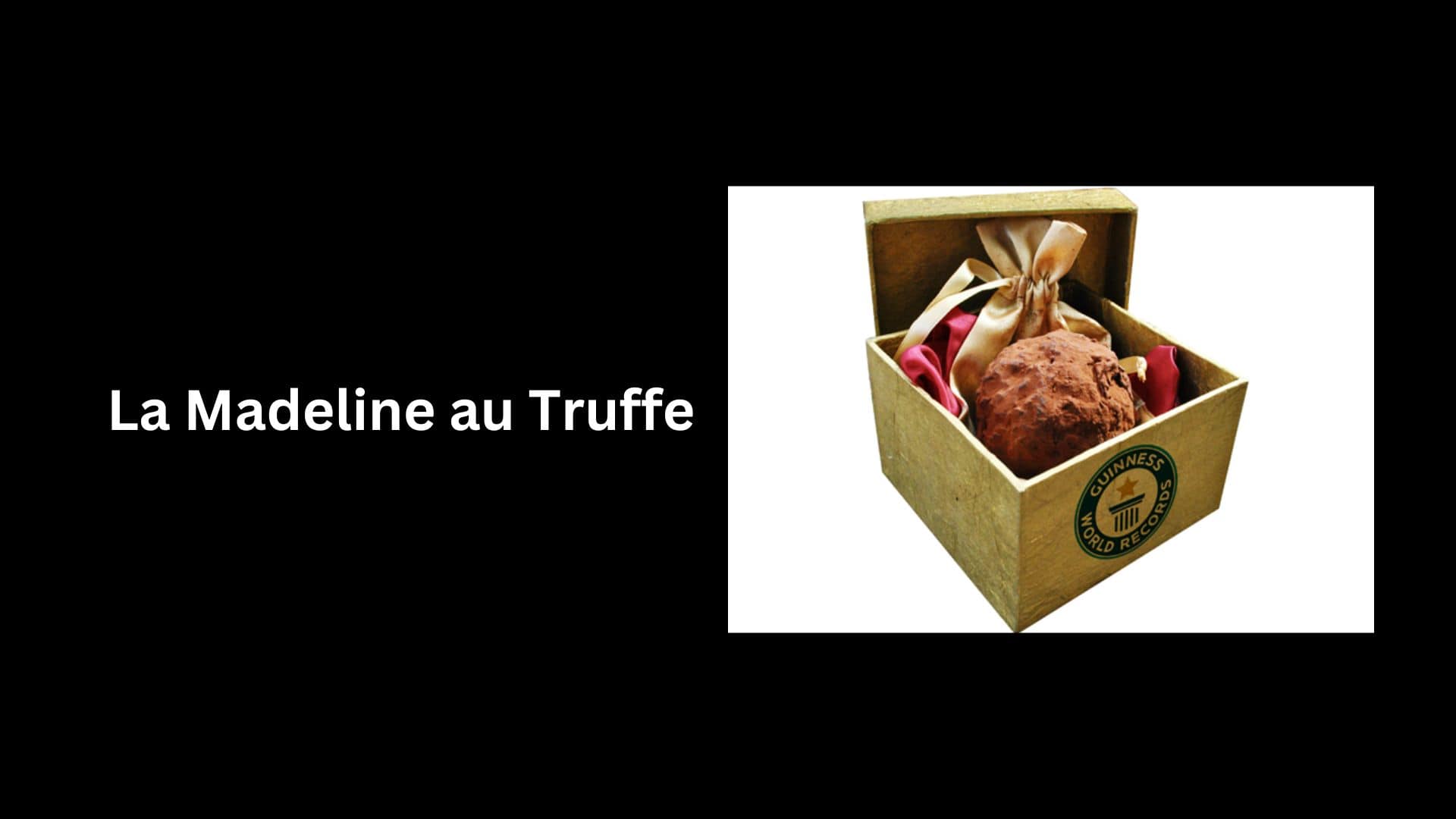 (Source: woot.com)
(Source: woot.com)
- Danish chocolatier Fritz Knipschildt is the creator of this luxurious chocolate.
- The ganache is made using 70% Valrhona dark chocolate, heavy cream, sugar, truffle oil, and vanilla.
- A rare French Périgord truffle is placed at the centre of each piece.
- The truffle is coated with Valrhona dark chocolate and dusted with fine cocoa powder.
- It comes beautifully arranged on a bed of sugar pearls inside a silver box tied with a ribbon.
- Each truffle weighs around 1.9 ounces (54 grams).
- For the best taste, it should be eaten within 7 days, but it can be frozen for longer storage.
- Every truffle is made fresh upon order.
- Orders take up to 14 days to be prepared and shipped.
#2. To’ak Chocolate
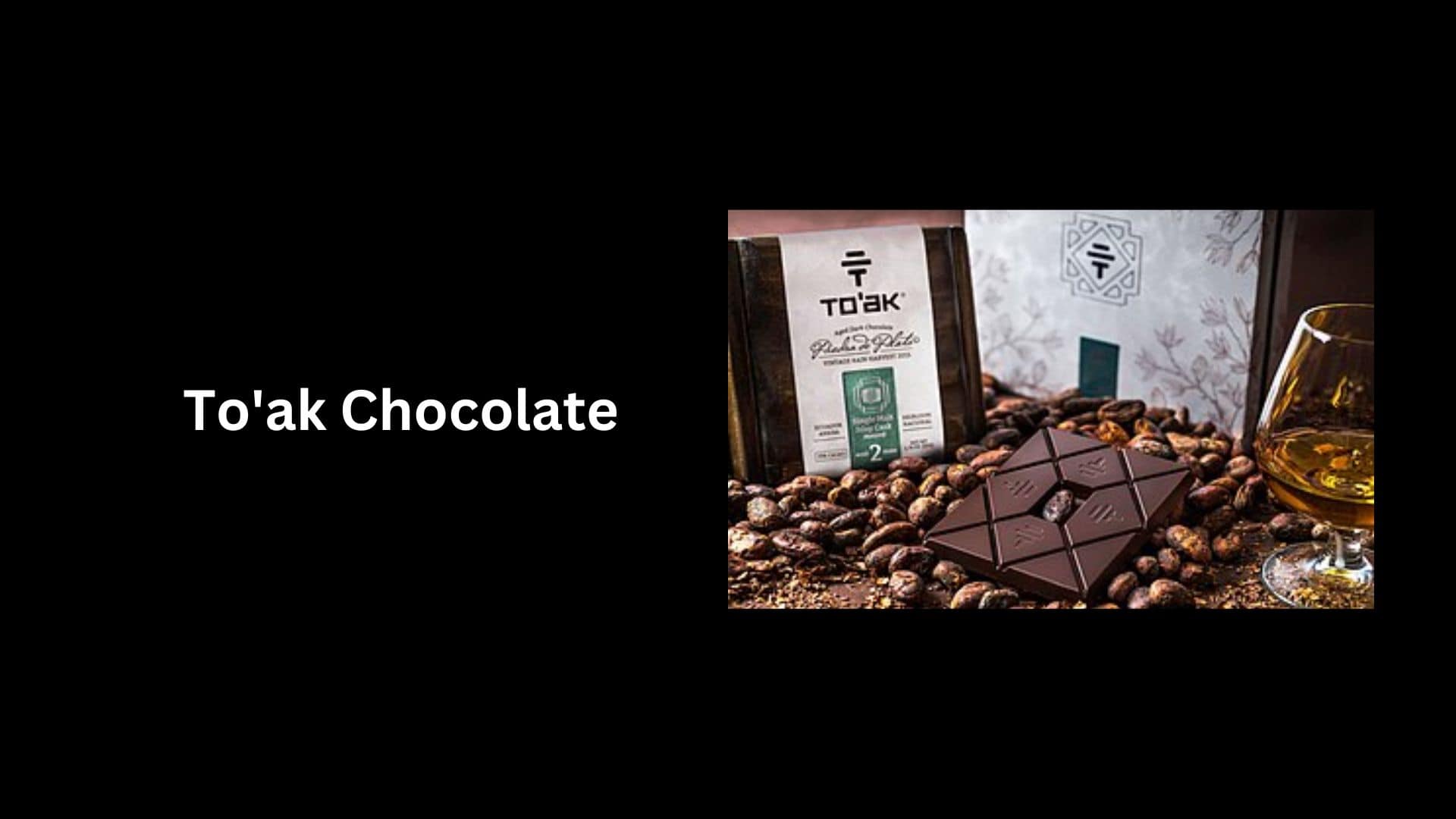 (Source: wikipedia.org)
(Source: wikipedia.org)
- The cacao content in these chocolates varies between 65% and 100%.
- Standard bars weigh 50 grams, while smaller mini bars are 14 grams each.
- Some chocolates go through an ageing process of up to six years in different types of casks.
- Certain special editions are extremely rare, with only 100 bars available.
- Most chocolates are made with pure Nacional cacao and cane sugar, but some include unique ingredients like Amazonian ants.
- Each chocolate bar is carefully packed in handcrafted wooden boxes, often with tasting tools and origin details.
- The brand focuses on sustainability and works to protect the rare Nacional cacao variety.
- The flavors of these chocolates range from floral and fruity to earthy and nutty.
#3. Frrrozen Haute Chocolate
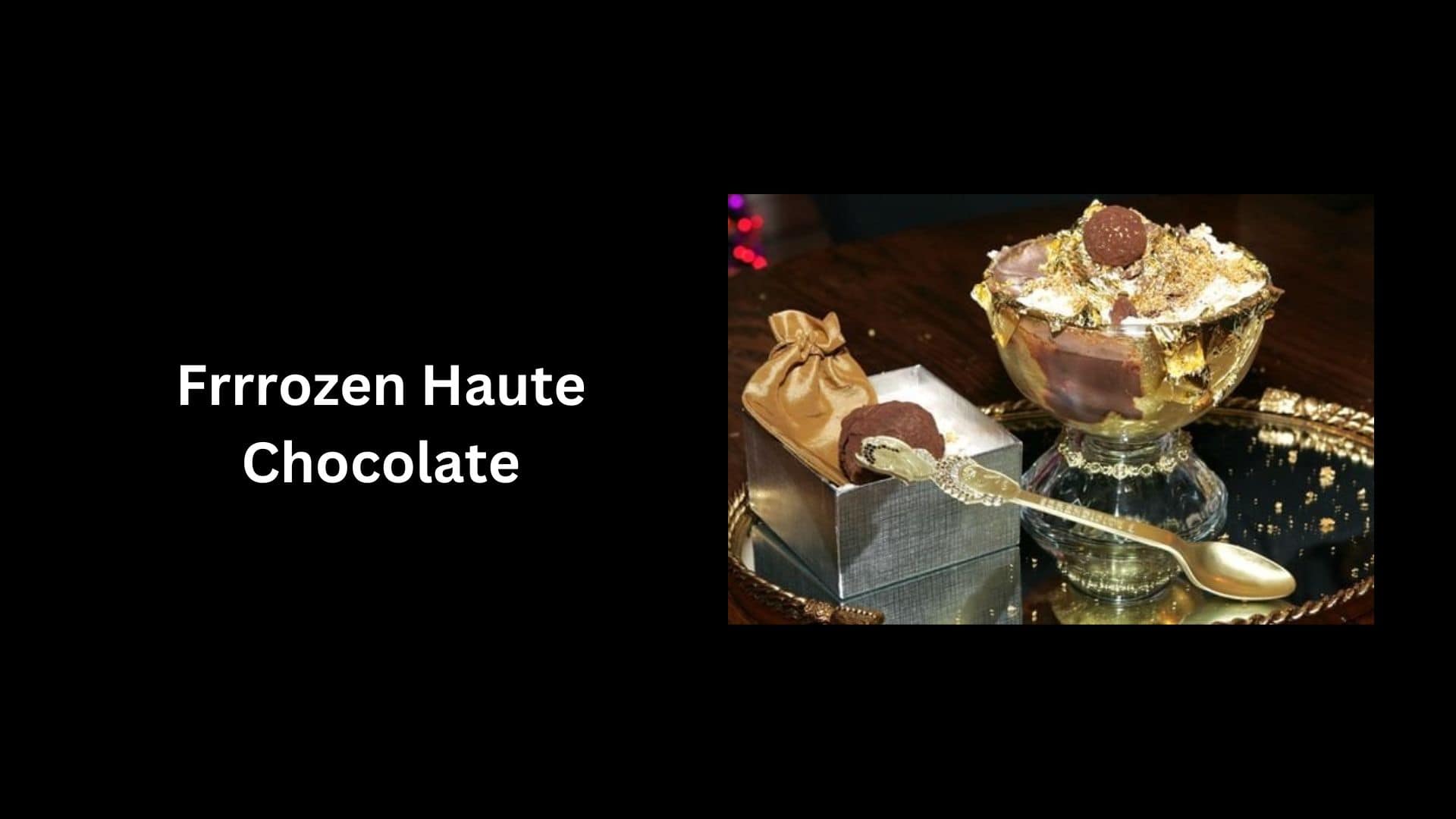 (Source: reddit.com)
(Source: reddit.com)
- A blend of 28 cocoas, with 14 being the world’s rarest.
- Incorporation of five grams of edible 23-karat gold.
- Served in a goblet lined with edible gold.
- The goblet’s base features an 18-karat gold bracelet adorned with one carat of white diamonds.
- Accompanied by a gold spoon encrusted with white and chocolate-coloured diamonds.
- Topped with whipped cream and more gold shavings.
- Requires a two-week reservation.
- Created in collaboration with luxury jeweller Euphoria New York.
#4. Wispa Gold Chocolate Bar
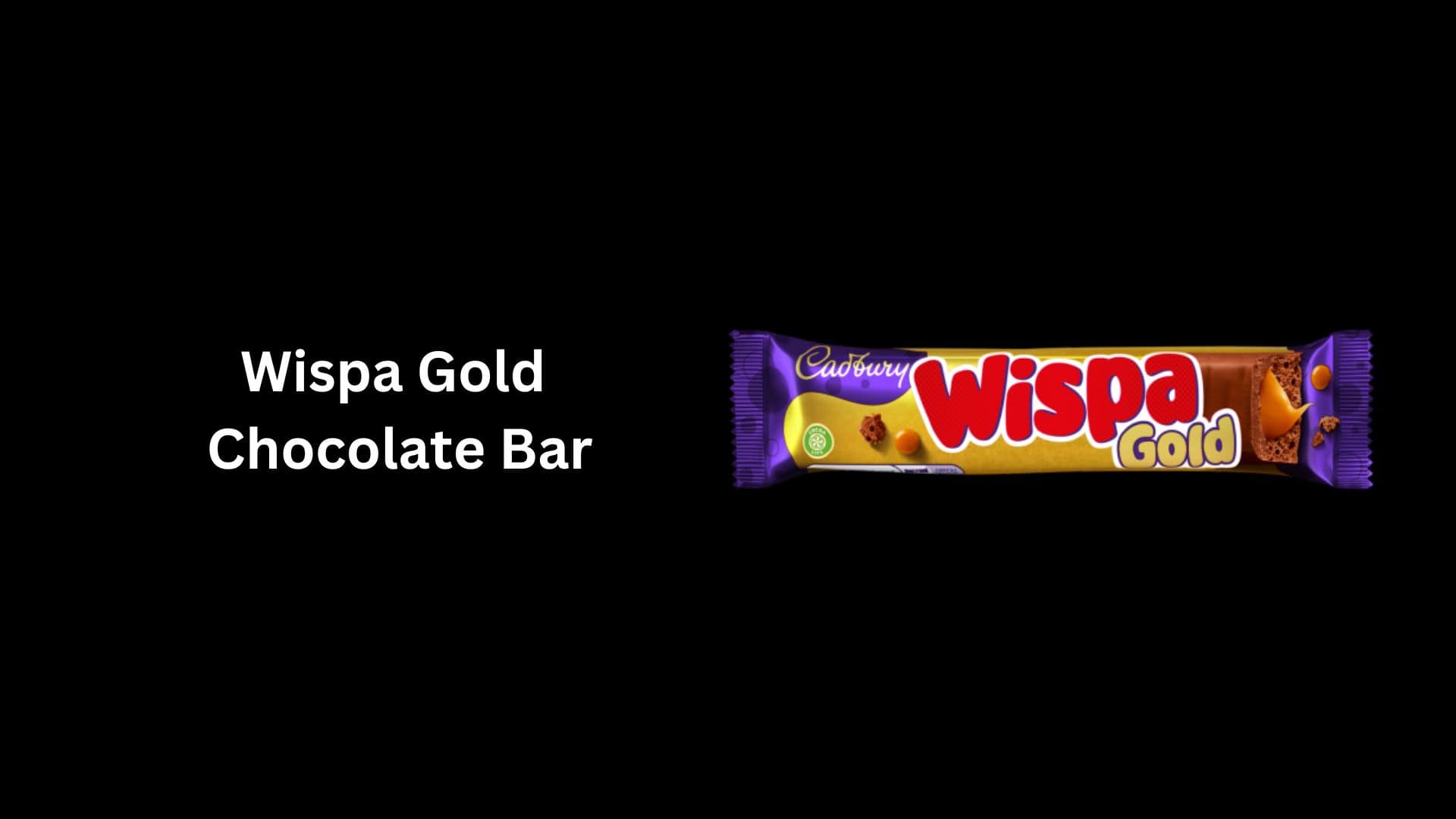 (Source: cadbury.co)
(Source: cadbury.co)
- Each bar weighs 48 grams.
- Made of light and airy milk chocolate with a smooth caramel filling.
- Contains about 241 calories per bar.
- Has 13 grams of fat, including 7.2 grams of saturated fat.
- Provides 29 grams of carbohydrates with 24 grams of sugar.
- Contains 2.3 grams of protein.
- Includes 0.16 grams of salt per bar.
- Key ingredients: Milk, sugar, cocoa butter, cocoa mass, vegetable fats (palm, shea), glucose syrup, whey powder, and flavourings.
- Vegetarian-friendly.
- Sold as a single 48g bar or in multipacks, such as a 4-pack (153.2g total).
#5. DeLafée Gold Chocolate
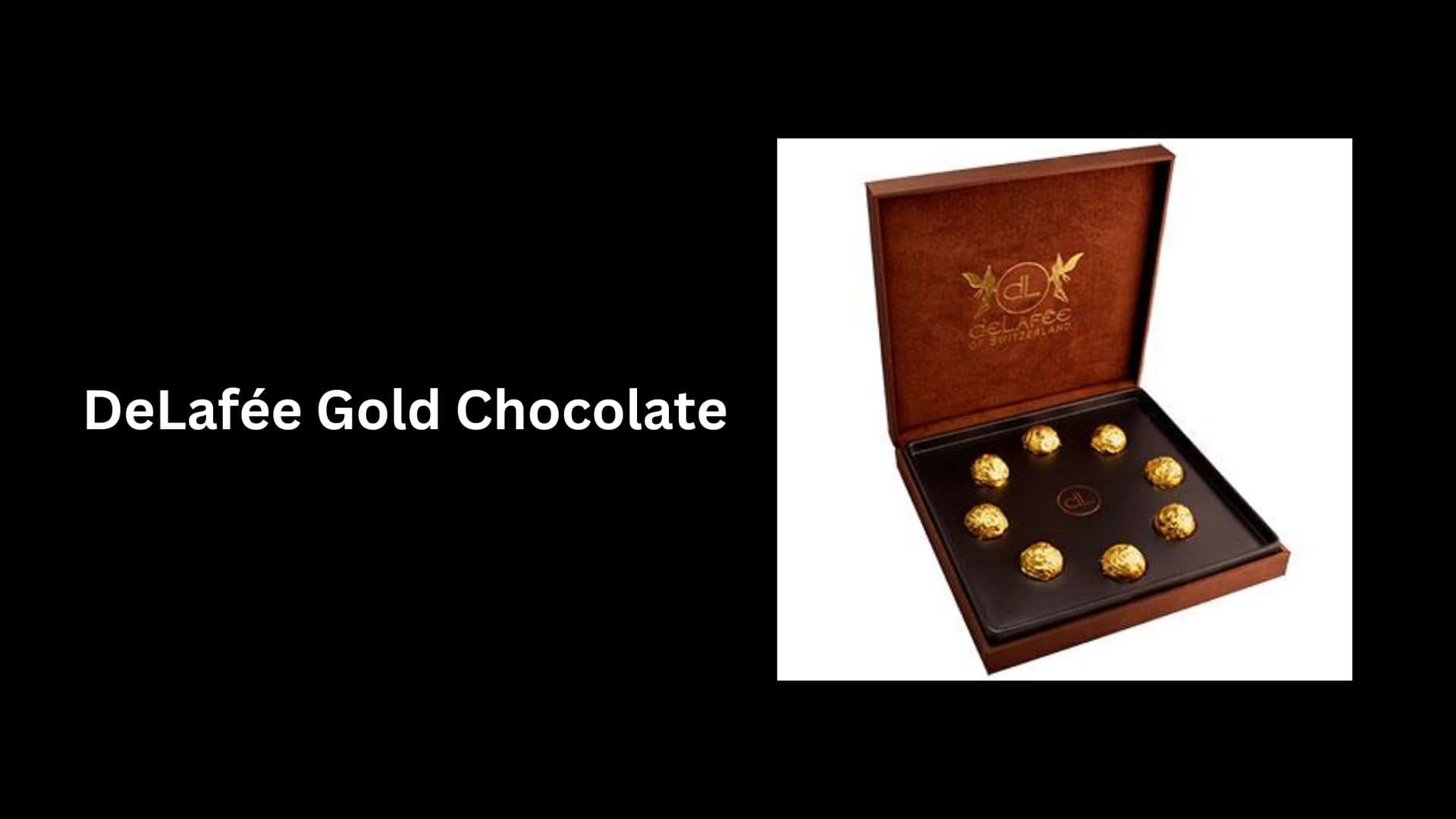 (Source: delafee.com)
(Source: delafee.com)
- The chocolate contains 56% pure Criollo cacao, known for its rich flavour.
- Each truffle is decorated with 24-karat edible gold leaf, adding a touch of luxury.
- A box includes eight truffles, perfect for gifting or special occasions.
- The chocolates come in a dark brown wooden gift box covered in satin with a glossy finish.
- The cocoa is sourced from Ecuador and is classified as high-quality “Grand Cru” chocolate.
- A special edition set includes a Swiss Vreneli 10 Francs gold coin (1897-1936) from the Swiss central bank.
- Customers can order online through DeLafée’s official website.
- The company is located in Neuchâtel, Switzerland and is known for its premium chocolates.
#6. Amedei Porcelana
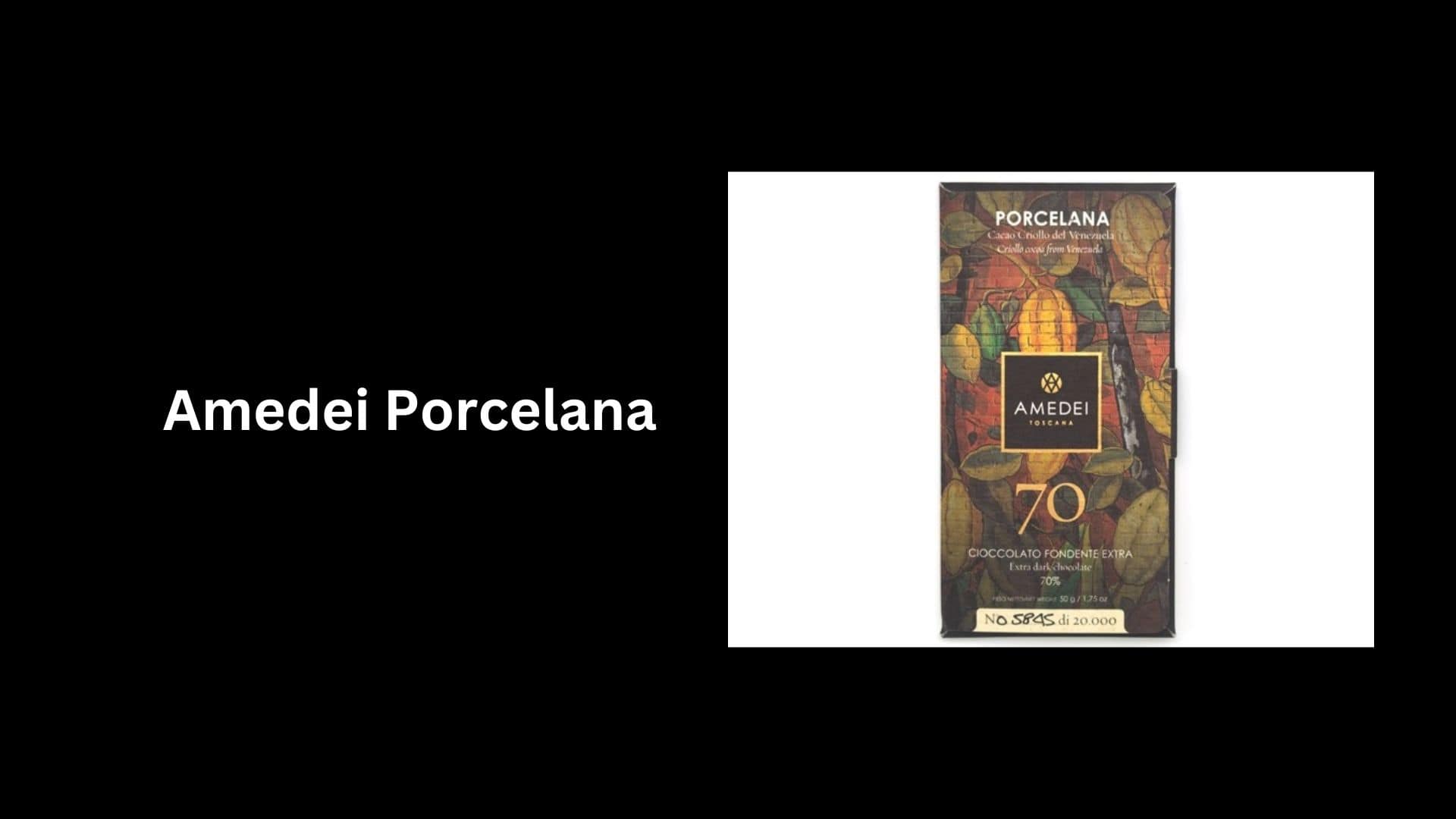 (Source: chocosphere.com)
(Source: chocosphere.com)
- Cocoa Content: Contains at least 70% cocoa solids.
- Cocoa Beans: Made only from rare Venezuelan Porcelana Criollo cocoa beans.
- Flavour Profile: It tastes like toasted almonds, with hints of cinnamon, coriander, nutmeg, and a touch of bay leaf.
- Texture: Smooth and creamy, with a rich and strong flavour.
- Limited Production: Only about 20,000 bars are made each year, each with a unique number.
- Packaging: Each bar is hand-numbered to show its exclusivity.
- Shelf Life: Stays fresh for 18 months if stored correctly.
- Storage Tips: Store in a cool, dry place between 14°C and 18°C.
- Certifications: Certified Kosher-Dairy by Star-K and labelled gluten-free and soy-free.
#7. Knipschildt’s Chocopologie
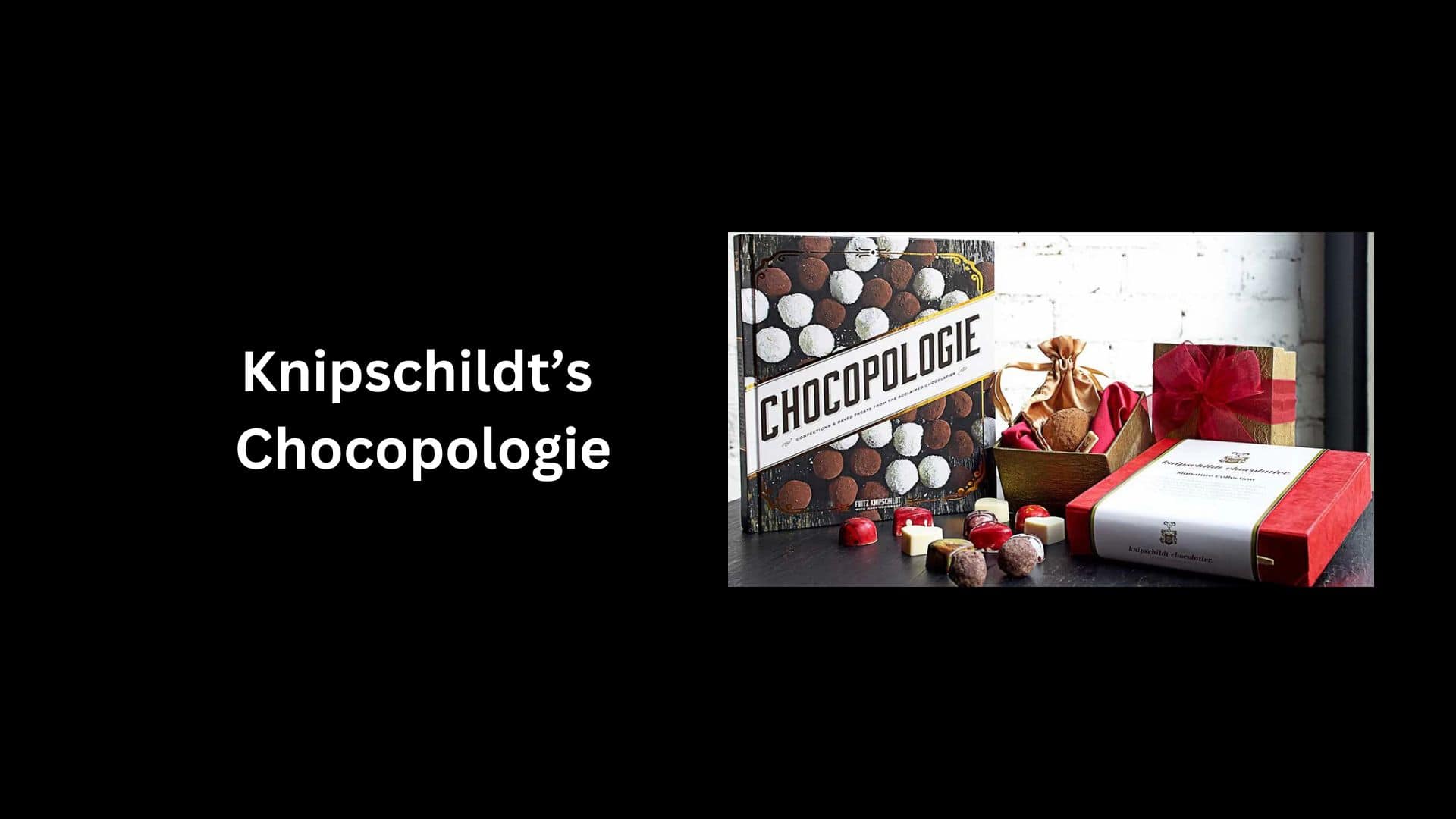 (Source: chocopologie.com)
(Source: chocopologie.com)
- This truffle is made with rare French Perigord truffles, wrapped in a smooth ganache made from 71% Valrhona dark chocolate, heavy cream, sugar, truffle oil, and vanilla.
- For the best taste, it’s recommended to eat it within 7 days of being made.
- Their signature collections come in boxes of 12 or 25 pieces and feature flavours like Caramel and Sea Salt, Mint, Tangerine/Ancho Chili, and dark chocolate bonbons.
- Each piece is carefully handcrafted, showing great attention to detail and quality.
- The chocolates use 100% Trinitario cocoa beans from the Dominican Republic.
- The chocolates come in handmade paper boxes that are eco-friendly.
- Danish chef Fritz Knipschildt, who founded the brand, adds his European craftsmanship to every chocolate.
- These chocolates can be shipped nationwide, allowing chocolate lovers to enjoy them no matter where they are.
#8. Richart Chocolates
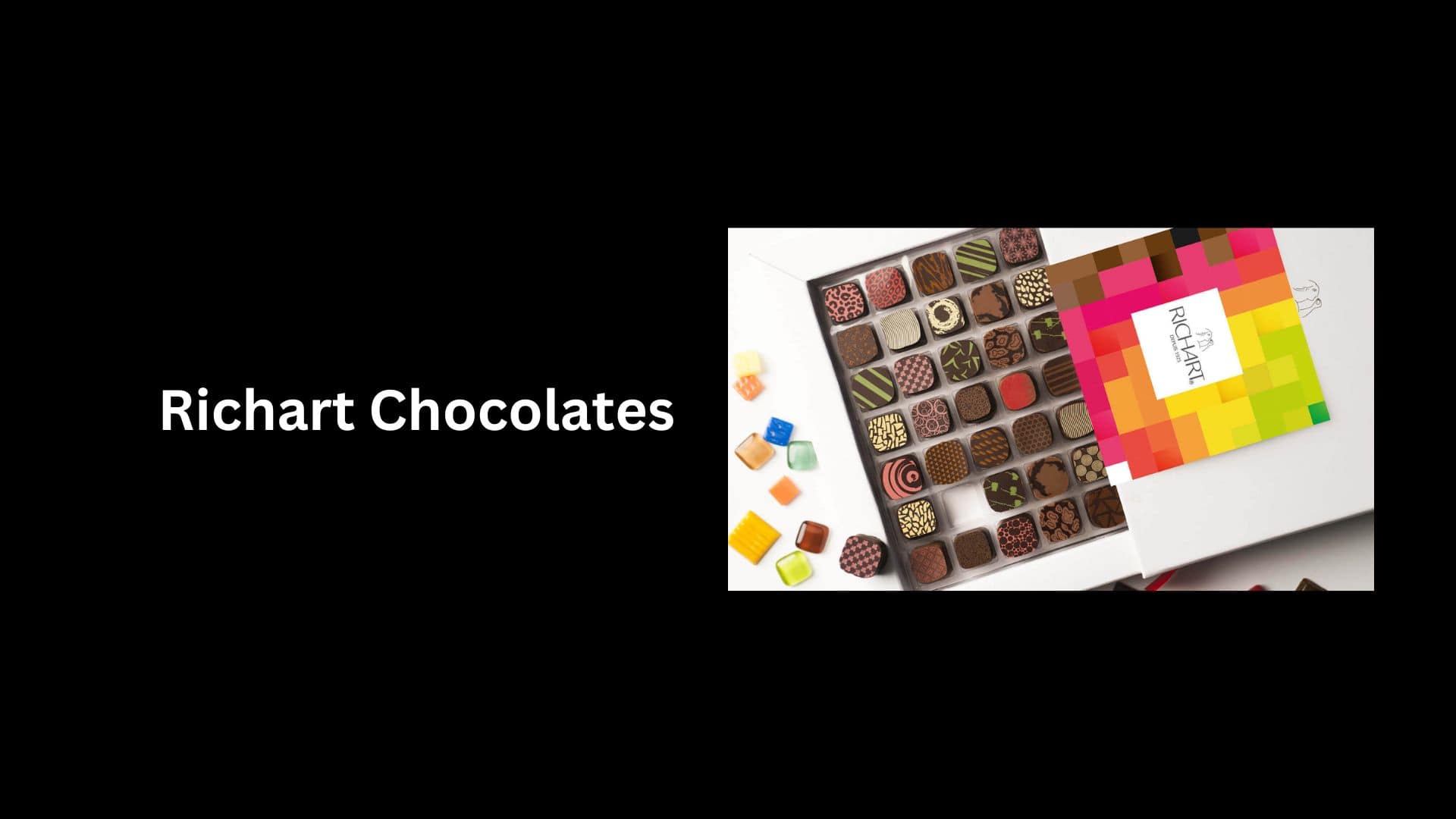 (Source: richart.com)
(Source: richart.com)
- Product Range: They offer a variety of chocolates, macarons, and fruit jellies.
- Les Petits RICHART: Each piece weighs about 0.14 ounces, which is smaller than the usual 0.4 ounces.
- Ingredients: They use cocoa beans from places like Madagascar, Venezuela, and Ecuador.
- Aromatic Families: There are seven different flavours, such as fruity, spicy, and floral notes.
- Nutritional Values: Per 100g: 518 kcal energy, 28g fat, 60g carbohydrates, 3g protein, and 26mg sodium.
- Packaging: The chocolates come in beautiful white drawer boxes, such as the 8.1 x 8.1 x 1.4-inch boxes for certain collections.
- Storage Tips: Store the chocolates at 55-60°F with 60-70% humidity. Eatth-filled chocolates within 2twoweeksofr delivery.
- No Preservatives: Their chocolates do not contain preservatives or artificial flavours.
- Availability: They deliver to North America, Europe, Asia, and the Middle East.
#9. Godiva “G” Collection
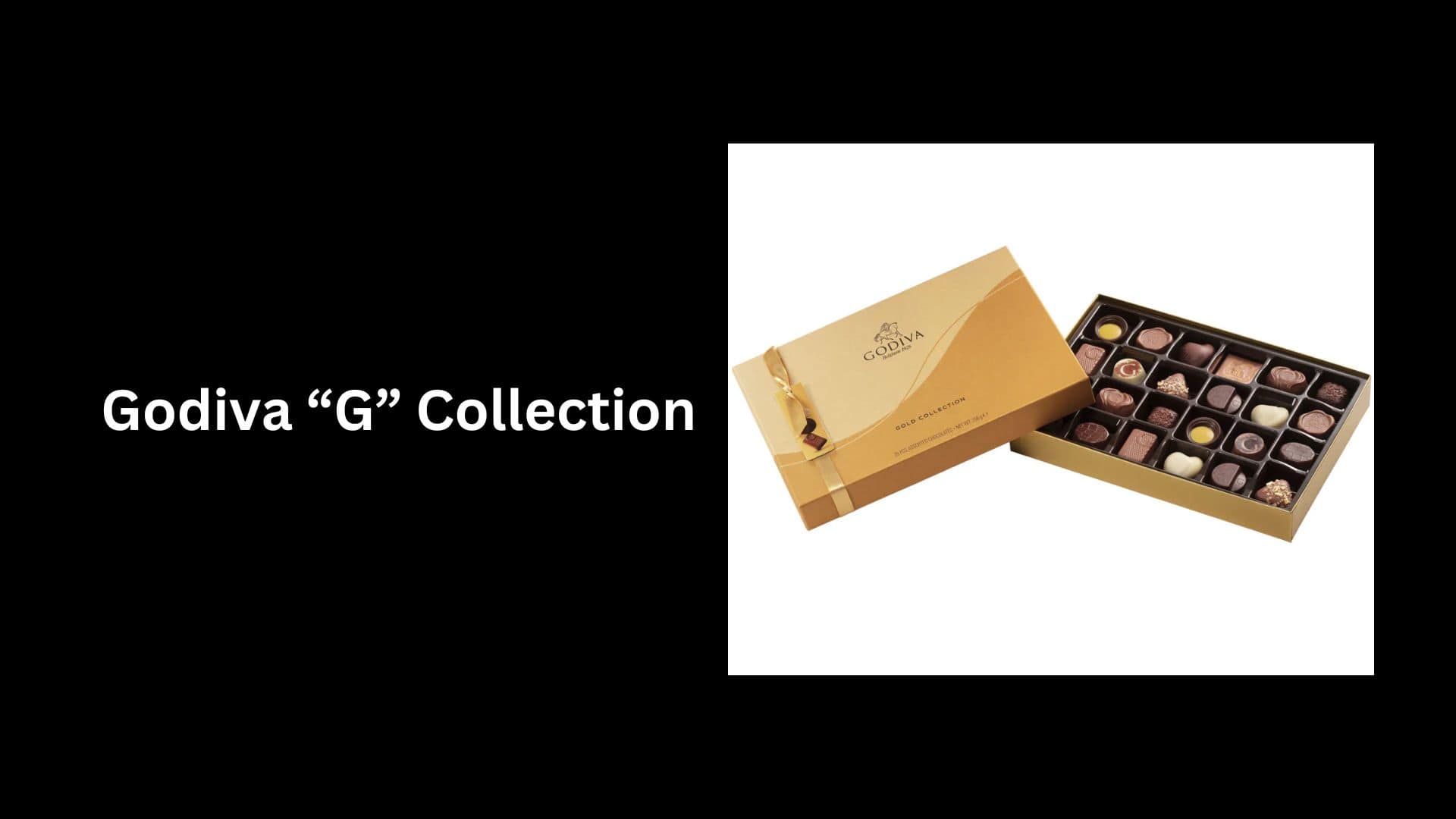 (Source: godiva.eu)
(Source: godiva.eu)
- Flavours: There are 10 unique flavours, such as White Chocolate Coffee, Milk Chocolate Matcha, and Dark Chocolate Strawberry.
- Packaging: Available in boxes with 10 pieces (USD 4.95) or 22 pieces (USD 11.95).
- Design: Each truffle is wrapped individually and shaped like a modern cube.
- Shell Composition: Made from milk, dark, or white chocolate, depending on the flavour.
- Ganache Fillings: Fillings include matcha, hazelnut, and strawberry.
- Limited Edition: Some seasonal flavours, like Milk Chocolate Pumpkin Spice, are introduced occasionally.
- Availability: These chocolates are sold in Godiva boutiques, selected stores, and online.
- Storage Recommendations: Keep them in a cool, dry place between 15°C and 18°C.
- Nutritional Information: One hundred grams contains about 506 kcal, 32g of fat, and 50g of carbohydrates.
#10. The House of Grauer
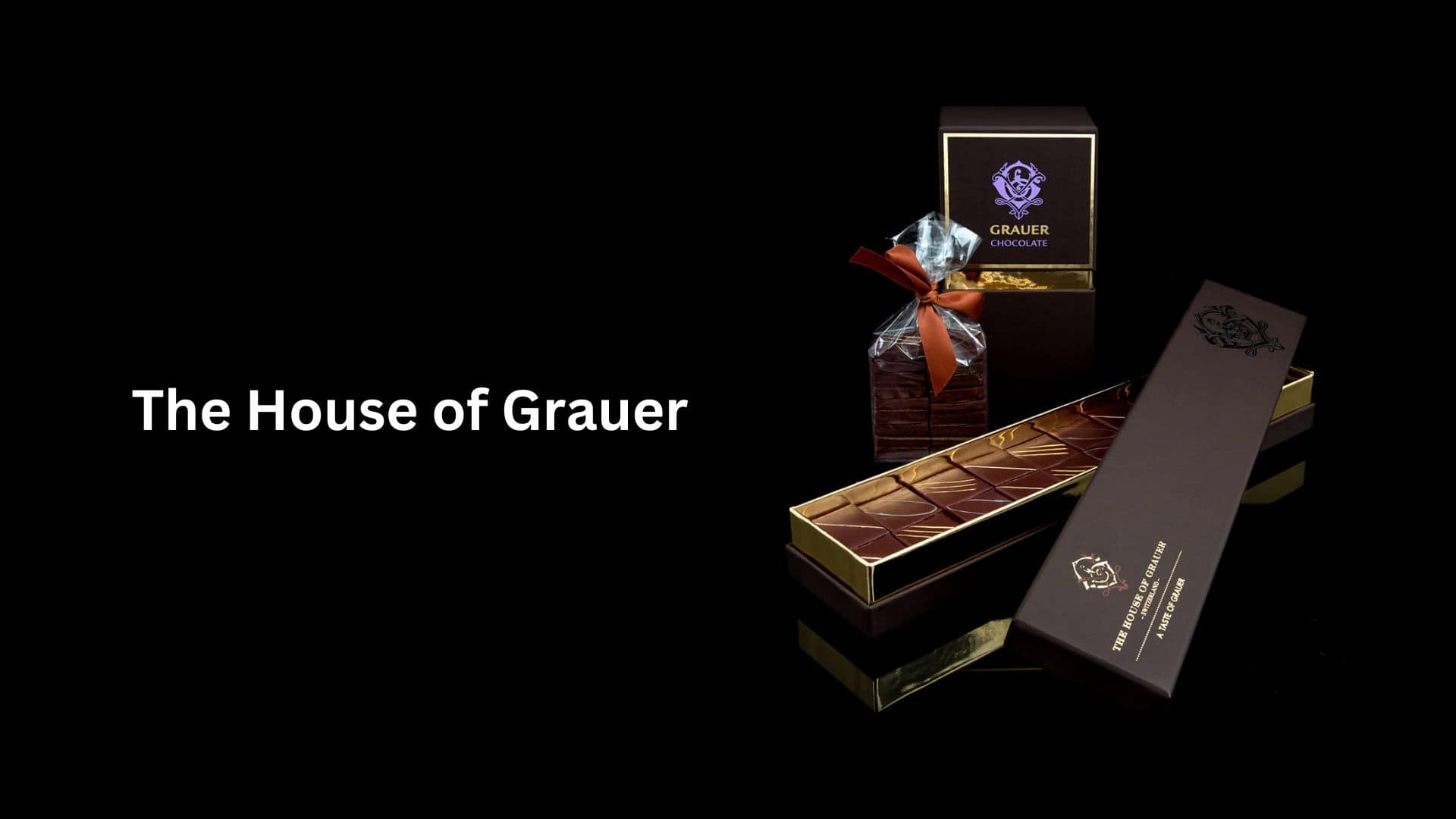 (Source: houseofgrauer.com)
(Source: houseofgrauer.com)
- Cocoa Blend: 69% of cocoa content is sourced from Cuba, Madagascar, and Bolivia.
- Flavour Profiles: Subtle smoky notes with ganache infused with Cuban tobacco, Scottish whisky, and Chinese tea.
- Handcrafted: Each piece is meticulously handmade in Switzerland.
- Shapes: Available in leaf, stick, and round forms.
- Packaging Options: Single-variety selections or mixed Aficionado boxes.
- Pairing Guide: Includes a Cigar and Chocolate Pairing Chart to enhance tasting experiences.
- Luxury Ranking: Recognized among the world’s most expensive chocolates at USD 0.26 per gram.
- Special Collections: Features unique assortments like “The Smoked Collection.”
- Availability: Offered through select online platforms and speciality retailers.
Conclusion
Expensive chocolates symbolize luxury and craftsmanship. They are made with the finest ingredients and crafted with extensive care to create a rich, delicious taste. Every detail, from the rare cocoa beans to the elegant packaging, adds to their uniqueness. These high-quality chocolates are ideal for celebrating special events or for anyone who loves gourmet treats.
Though they are costly, the experience of tasting them is truly worth it. Enjoying luxury chocolates means savoring some of the finest flavors available.
Sources
FAQ.
Expensive chocolates are made up of rare ingredients and high-quality cocoa crafted by experts and come in beautiful packaging. This combination gives them richer flavours and a luxury experience.
Such chocolates may be healthier if they contain high-quality cocoa, less sugar, and natural ingredients, but it depends on the brand.
You can buy expensive chocolates at luxury chocolate boutiques, high-end department stores, gourmet online shops, and exclusive brand websites.
Yes, some of these chocolates contain real gold, rare spices, or unique ingredients, enhancing their luxury and exclusivity.
To keep expensive chocolates fresh, store them in a cool, dry spot, away from sunlight and moisture, at temperatures between 15-18°C.

Barry Elad is a tech enthusiast passionate about exploring various technology topics. He collects key statistics and facts to make tech easier to understand. Barry focuses on software and its benefits for everyday life. In his free time, he enjoys creating healthy recipes, practicing yoga, meditating, and walking in nature with his child. Barry's mission is to simplify complex tech information for everyone.











